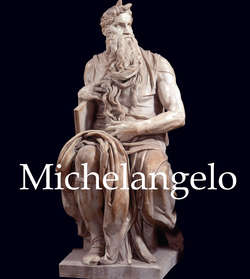Читать книгу Michelangelo - Eugène Müntz - Страница 5
На сайте Литреса книга снята с продажи.
Childhood
ОглавлениеThe close of the 15th century marked the start of a new era. Decades of plague, war and famine had thrown Europe into a period of radical change. Mindsets were changing. Medieval values were rejected as people with a deep need for social change looked to their flourishing economies and a range of new technologies.
Angel Holding a Candelabra
1495
Marble, h: 51.5 cm
Church of San Domenico, Bologna
Lorenzo de Medici, François I and other great Europeans maintained that the arts were as important as war. Moreover, the printing press made culture more accessible to greater numbers of people. It was in these revolutionary times that a minor civil servant from the petty nobility of Florence was appointed local governor (podestà) of the diocese of Arezzo.
St Proculus
1495
Marble, h: 58.5 cm (with base)
Church of San Domenico, Bologna
His name was Lodovico di Leonardo Buonarroti Simoni and he settled in the town of Caprese. His second child, Michelangelo, was born on Sunday, March 6, 1475. After two terms as local governor, he moved the family back to their homestead in Settignano just outside Florence.
The Virgin and Child with St John and Angels (The Manchester Madonna)
c. 1495–1497
Egg tempera on wood, 104.5 × 77 cm
The National Gallery, London
When his wife died in 1492, he was left with five children to raise alone. Michelangelo was only six at the time. Left motherless, he became a tight-lipped, insolent and stubborn child.
Bacchus
1496–1497
Marble, h: 203 cm
Museo del Bargello, Florence
Packed off to board with a stonecutter’s family, he soon channelled his frustration into extracting stone from the nearby quarry alongside his foster family’s own children. Alongside them, Michelangelo learned the tools and skills that he would later apply to his masterpieces.
Pietà
1498–1499
Marble, h: 174 cm
St Peter’s Basilica, Vatican
“If there’s anything good in me”, he told his friend Giorgio Vasari one day, “it comes from being born in the subtle atmosphere of our Arezzo countryside, and, from my wet nurse’s milk, I drew forth the hammer and chisel I use to make my statues”, according to Robert Coughlan.
Nude Woman Kneeling
1500–1501
Study for the Entombment
Musée du Louvre, Paris
Later in life, Michelangelo would see this experience as the true source of his art. Michelangelo was to travel a path that diverged sharply from that of his brothers, who went into the silk business. He stood out because of his fine intelligence and sensitivity.
Sketch for a David with Catapult
1501
Musée du Louvre, Paris
His father sent him to study under Francesco d’Urbino, a top grammarian who opened Michelangelo’s eyes to the beauties of Renaissance art. But Michelangelo was always more inclined toward drawing than classical studies, and he quickly made friends with an older co-student, Francesco Granacci, who was also a student of the painter Domenico Ghirlandaio.
David
1501–1504
Marble, h: 410 cm
Galleria dell’Accademia, Florence
Struck by Michelangelo’s ambition and drive, Granacci persuaded him to take up art too and even helped convince his father, who thought “manual labour” was unbecoming to the son of a Florentine civil servant.
Study for the Statue of David
c. 1501–1502
Drawn with quill, with annotated manuscript by Michelangelo
Musée du Louvre, Paris
Michelangelo stood his ground and his father eventually relented, exploiting a distant kinship to the Medici to enroll him in Ghirlandaio’s workshop (bottega) as an “apprentice or valet”.
Study of a Figure in Movement Inspired from Apollo from the Belvedere
1503–1504
British Museum, London
Though he seethed at the thought of being anyone’s valet, he kept silent. In any event, Michelangelo joined Ghirlandaio’s workshop at the age of 13 on April 1, 1488. It was his first formal step toward becoming the greatest painter the Renaissance ever produced.
Madonna and Child
1503–1506
Marble, h: 120.9 cm
Notre Dame, Bruges
